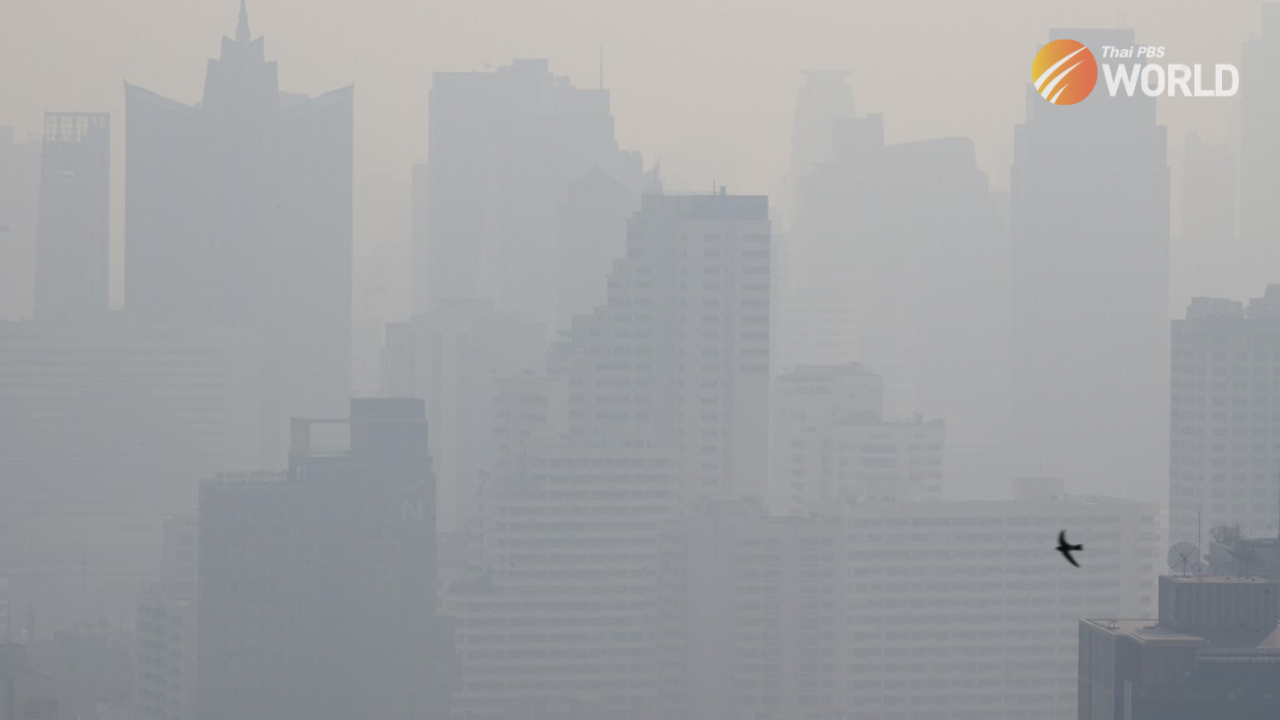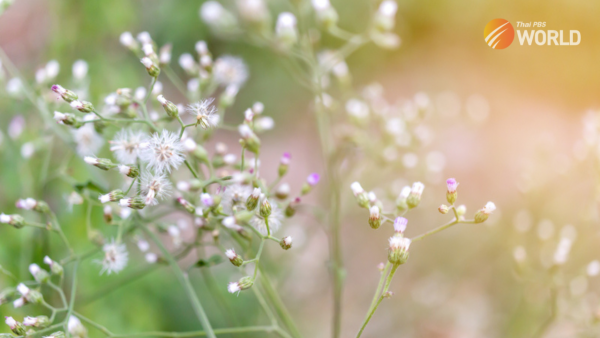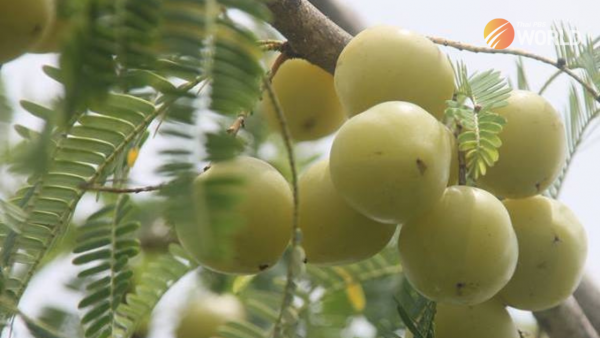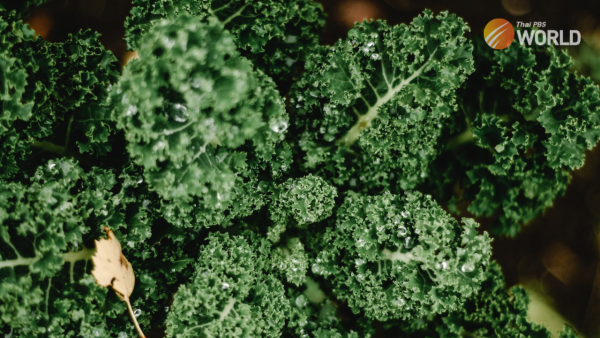Protecting yourself from the harmful effects of haze

Fine air pollution particles are continuing to have adverse effects on the health of people around the country, as the air they are breathing has reached dangerous levels of pollution.
On April 7, the levels of particulate matter 2.5 or PM 2.5 in Bangkok and surrounding provinces ranged from 33 to 57 micrograms per cubic meter of air, according to the Pollution Control Department, with 18 areas classified as orange, reflecting levels at which they start to affect health.
Any PM 2.5 concentration exceeding 50 micrograms per cubic meter of air is considered unsafe, according to Thailand’s safety air quality standard.
The department predicts that the dust situation in Greater Bangkok and its vicinity will improve from now until April 14 due to the southerly winds sweeping the smog away from the provinces and rainfall in some areas.
To fight the smog that is toxic and carcinogenic, installing an air purifier in the room in which you spend the most time, limiting outdoor activities, and wearing a good mask when going outside may not be enough. Experts and nutritionists say there are also a few natural antidotes that can minimize the negative consequences of breathing in the harmful substances contained in the air. They advise fortifying oneself from within by eating healthy diets loaded with nutrients and antioxidants which can help fight infections, improve immunity, and flush away toxins from the body.

Herbs that help remove toxins from the body
Experts from Chaophraya Abhaibhubejhr Hospital suggest Vernonia cinerea, which is commonly known as little ironweed, or ya dok khaw in Thai. They say the plant can help detoxify and clean the lungs naturally.
One study revealed that the plant helped reduce the level of carbon monoxide that builds up in the lungs amongst the smokers who participated in the test. Another was carried out in rats. The results showed that injection of the plant extracts improved the respiratory tissue in chronic nicotine treatment in animals.
Other studies demonstrated that little ironweed, which is packed with flavonoids and terpenoids, also acts as both an antioxidant and anti-inflammatory agent.
“So, the plant could help the body fight infections and relieve some respiratory ailments caused by air pollution,” the experts said in an article posted on the hospital’s website.
This tropical plant is usually consumed in the form of herbal tea. But its ingestion comes with a caution: use of the plant is often unsafe for patients with heart and kidney problems as it is high in potassium.
Considered the king of detoxifying herbs, Thunbergia laurifolia or Rang Chued in Thai seems also to have detoxifying effects, they said. The plant leaf extract increased levels of antioxidant enzymes and protected human cell lines in vitro against cadmium, a heavy metal found in particulate matter.
Indian gooseberry or makham pom in Thai, meanwhile, can help clear the airways of irritants and help a cough. It could also treat asthma and bronchitis, the experts said.
A study showed that extracts of this small green fruit helped alleviate the negative effect of sulfur dioxide, a main component of the haze, in rats due to its antioxidant and anti-inflammatory effects.
Curcumin, a natural compound of turmeric, also has antioxidant, anti-inflammatory and anti-cancer properties which could be beneficial in lung and heart conditions, they said.
In some animal studies, curcumin has been found to have a chelating effect on cadmium and arsenic attached to the particulate matter. This means that it binds to these metals and helps flush them from the body.
But the herb may not be good for pregnant women and patients with bile duct obstruction, they warn.

Eating the rainbow
Now back to the basics. Nutritionists from the Department of Health’s Bureau of Nutrition, meanwhile, encourage people to incorporate fruits and vegetables of different colors into their diets in order to combat the ill effects of pollution. This is because they contain phytonutrients that have antioxidant and anti-inflammatory benefits on the body.
Dark green, leafy vegetables like broccoli, kale and spinach as well as green apples and grapes, they explain, contain a high amount of chlorophyll and lutein, both of which are antioxidants. They fight gene-damaging free radicals in the human body that could protect against cancer.
Sulforaphane, the compound in broccoli and cauliflower can help the body get rid of toxic pollutants and fight inflammation, the nutritionists noted.
Red fruits and vegetables like tomatoes, watermelons and pink dragon fruits are rich sources of lycopene and betalains that have antioxidant and anti-inflammatory benefits and support detoxification, which has been shown to reduce cancer risk, they said.
Purple-colored fruits and vegetables are packed with anthocyanins, which have a role in cancer prevention.
Beta-carotene found in the yellow and orange vegetables and fruits is a powerful anti-oxidant that can reduce inflammation and boost immune function by increasing disease-fighting cells in the body.
Meanwhile, flavonoids in white and brown fruits and vegetables have antioxidant and anti-inflammatory effects. They help protect the human cells from oxidative damage that can lead to diseases including cancers. The phytonutrients are rich in Chinese cabbage, mushrooms, radish, Job’s tears, bananas, the pulp of mangosteen, and Chinese pears.
The key point is that people should consume 400 grams of colourful fruits and vegetables a day in their meals, the nutritionists stressed. That can provide a wide variety of nutrients and antioxidants which protect the body from the harmful effects of air pollutants.

PM 2.5: Small and dangerous
What makes PM 2.5 dangerous is that these particles are tiny and light so they tend to stay longer in the air. This increases the chance of inhaling them, thus posing risks to health. Another concern is because they are so small, they can travel through the respiratory tract and settle deep in the lungs.
Doctors say exposure to PM 2.5 can cause sneezing, coughing, runny nose, eye and lung irritation, and skin problems. It also worsens respiratory ailments including asthma. Cumulative exposure over time can lead to many health conditions. And this particulate matter has also been linked to premature death, particularly in people with chronic heart and lung disease, and reduced lung function growth in children.
By Veena Thoppkrajae






